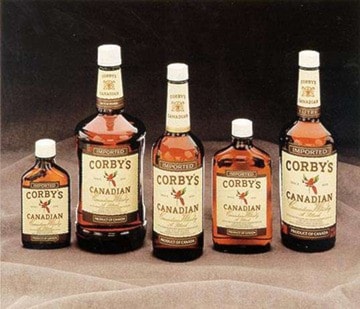After Canada implemented prohibition, 1918-1920, originally as part of the War Measures Act, returned servicemen were soon agitating for a return to the bad old days.
Where there’s a will there’s a way, so they say. And never more so than when it comes to demon drink, a human craving almost as old and essential as, well, you know. From time immemorial human ingenuity has filled this need within or without the bounds of the law.
In January 1920 one of those self-appointed quenchers of the public thirst found himself in Duncan court before JPs W. Paterson and Dr. Watson Dykes to answer the charge of having violated a statute of the Prohibition Act. Archibald Tiderington of Lake Cowichan had, in other words, been charged with bootlegging.
Specifically, for having “unlawfully ...intoxicating liquor in a place other than the private dwelling place in which he resided, to wit the residence of Mr. Edward Stock, Duncan”. To which he pleaded, not guilty.
Cyril Pitt, the first witness for the Crown, testified that he’d been in charge of luggage aboard the E&N train bound from Cowichan Lake on Dec. 24, that he’d seen Tiderington deliver a large black trunk to the train by wheelbarrow for shipment to Duncan, and he identified the trunk in the courtroom.
Provincial Police Const. Kier then stated how he’d seen the trunk in the train’s baggage car upon its arrival in Duncan. Although the trunk was securely locked, it was leaking, a pool of what he identified by its smell as liquor having seeped onto the floor. When it was duly shipped to the house of Edward Stock, proprietor of the Quamichan Hotel, he and city constable Kennett seized the trunk and carried it to the police station. There, upon opening, it was found to contain a smaller trunk — this one containing 12 quart bottles of Canadian Club and Corbey’s Canadian Whiskey, three of which were broken; all were produced in court.
For the benefit of the magistrates he opened a bottle, “smelled the contents and swore that it and the other eight bottles contained whiskey”. This sounds something less than scientific but such was the casual legal standard of the day. Under cross-examination, Kier admitted that he didn’t have a warrant when he searched Stock’s home. (Another laxity of the law.)
Edward Stock admitted to having carried the trunk from the railway station to his home at Tiderington’s request, with the intention of keeping it for him for a few days. He didn’t open the trunk and he didn’t “notice anything peculiar as to odour” and he didn’t know that it contained whiskey. This concluded the case for the Crown.
Defence counsel Moresby made two objections to conviction: that it hadn’t been proved that Tiderington was the owner of the liquor, and “there was no proof that it was intoxicating liquor”. He also pointed out that the Act placed no limitation upon “the amount of liquor a man could obtain by prescriptions. Even if it were two quarts for one person, there [is] nothing in the Act to prevent a sick person from going to a dozen different doctors.”
This, he declared, was practised every day and he’d prove that the liquor in question had been obtained legitimately through the government vendor. If the Liquor Control Board hadn’t considered Tiderington’s actions to be a “moral fraud on the Act,” why should the police?
He also stated that “a man ha[s] an undisputed right to move the liquor after he bought it from the vendor’s store; there was nothing in the Act prohibiting a man from having prescription liquor where he wanted to have it”.
On the stand, Tiderington gave his occupation as chicken rancher.
He admitted to ownership of the liquor in the courtroom and said he’d purchased it in government liquor stores.
He had multiple doctors’ prescriptions in Victoria and Vancouver for the alcohol. He pointed out that each bottle bore a label declaring the contents to be “For medicinal purposes only.”
Asked why he’d shipped the booze from Lake Cowichan to Duncan, he replied that he’d done so for “safekeeping,” his house having previously been broken into during his absence. As he’d intended to be away for a few days he intended to store the liquor temporarily with his friend Stock. After admitting under cross-examination that he was unemployed he gave his current occupation as “property owner.” The six bottles, he explained, were purchased over a two-month period with six prescriptions issued by five physicians whom he named in Victoria and Vancouver. What was his “malady?” Indigestion!
And a mild cold.
Asked why he hadn’t used the “medication,” he gave no reply. Had he bought the booze in good faith? Yes. Had he ever been busted before for bootlegging? No. Was he a bootlegger? No.
This ended the evidence, the prosecutor stating his belief that he’d proved that Tiderington had obtained the liquor “in a way that was not bona fide”. Defence counsel, of course, was sure that the evidence submitted was insufficient for conviction.
In giving judgement Dr. Dykes said there was no question but that Tiderington did have the liquor in “a place other than his residence,” a violation of the Act. Perhaps in deference to his fellow physicians, Dykes said nothing about its having been obtained, in unreasonable quantity, for the defendant’s “aches and chills”. JP Paterson then imposed a $100 fine, the maximum for a first offence, the whiskey to be forfeited.
www.twpaterson.com
